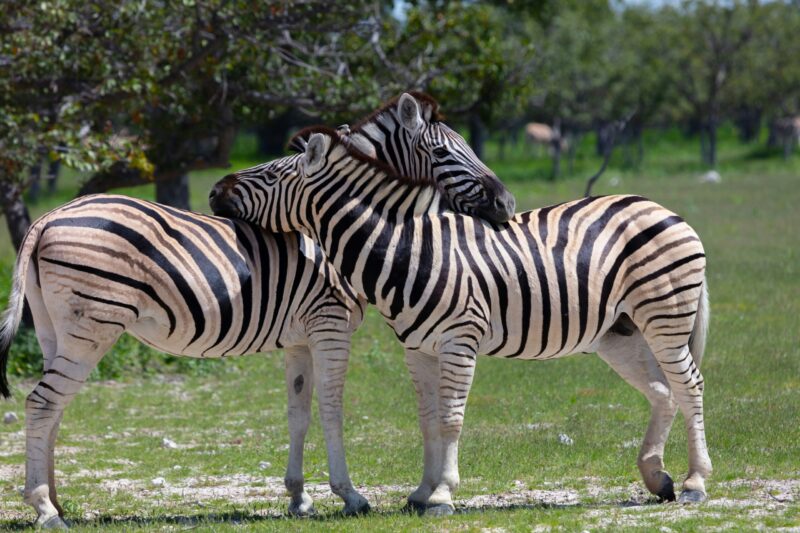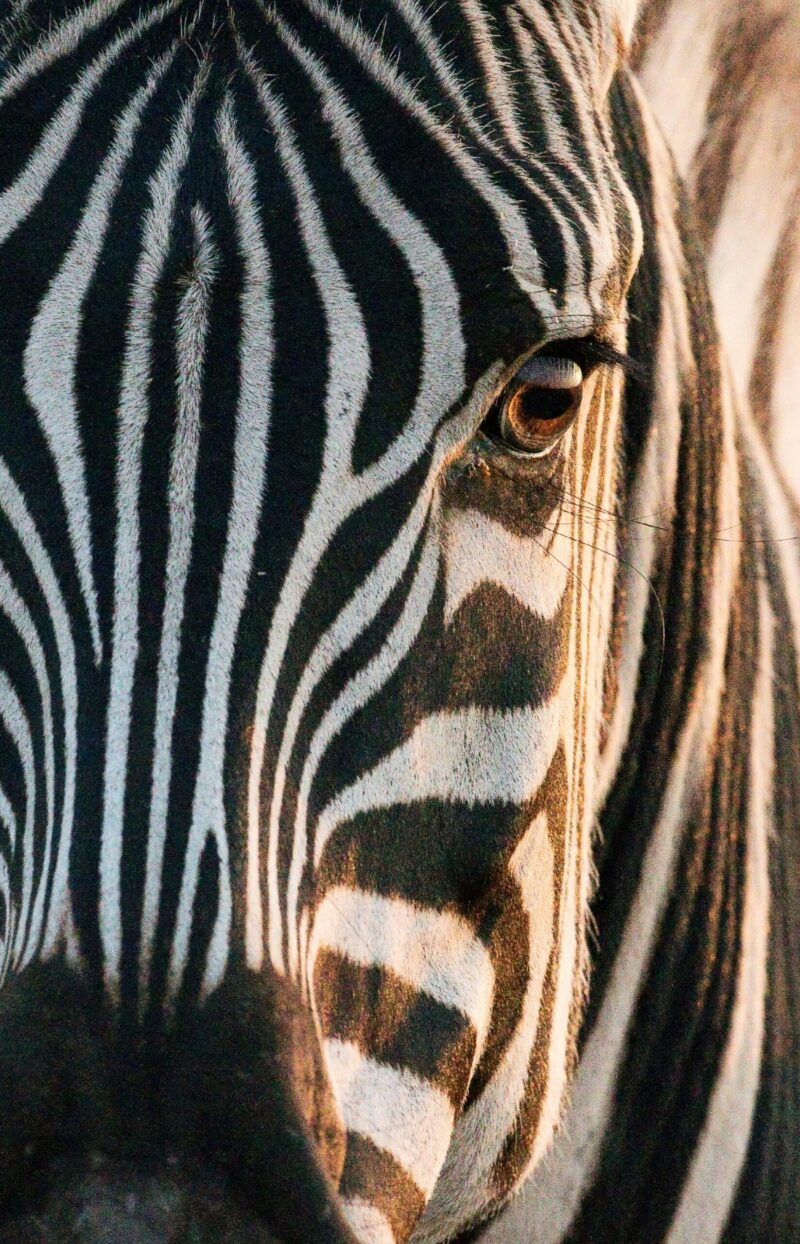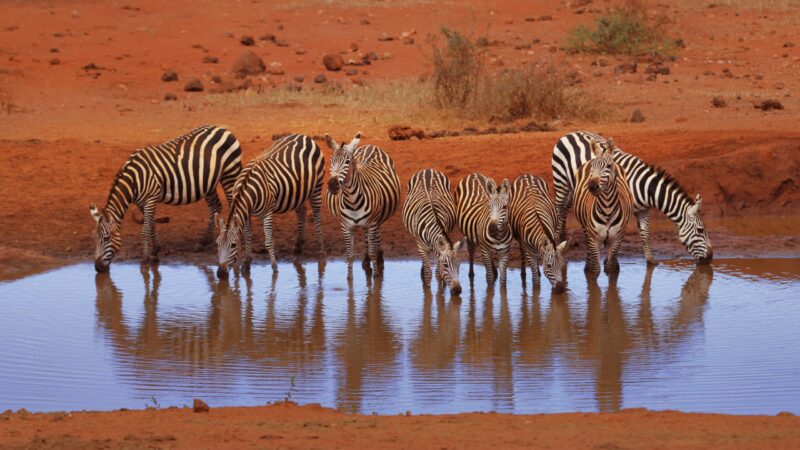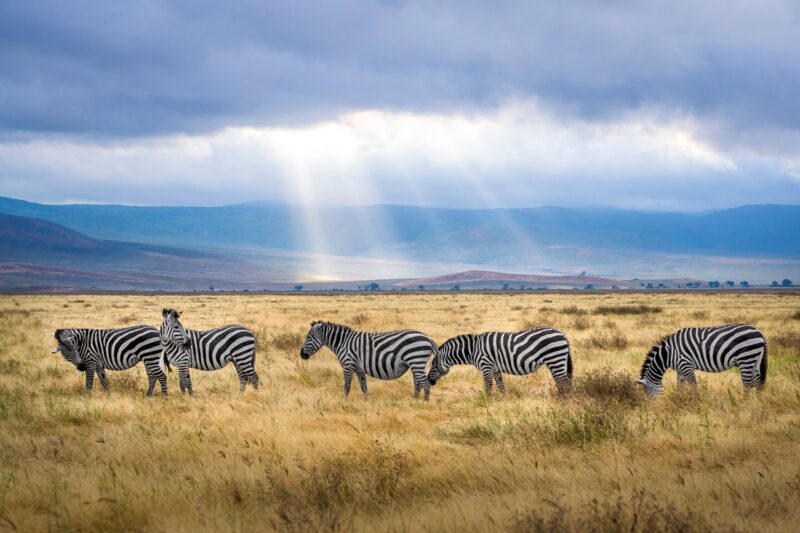Look at these zebras! They look like good buddies! Image via Pixabay/ Pexels.
Happy International Zebra Day! Here are some interesting facts about them you can share with your friends and family. Let’s celebrate their day together!
A zebra’s stripes
Many people know zebras for their stripes. But are they black with white stripes, or white with black stripes? Well, it turns out that underneath their coats, they have black skin! So, if you shaved a zebra, it would look all black.

Alan J. Hendry/ Unsplash.
There are 3 types of zebras: Grévy’s zebra, mountain zebra and plains zebra, which has a further 6 subspecies. Each species has a different stripe pattern. And not only that, every pattern is unique, like human fingerprints, making each individual one of a kind.

Zebras have a built-in bug repellent
You might wish to look like a zebra, because their black-and-white striped pattern is a bug repellent! What better natural way to avoid insect bites? The Royal Society published a study on August 19, 2020, where researchers recorded and reconstructed tabanid fly behavior around horses wearing differently patterned rugs. They found flies avoided landing on, flew faster near, and did not approach striped and checked patterns compared to the solid-colored models. So, if you want to avoid pests, dress in high-contrast clothing, like a zebra. See? No pesticides needed.
Another cool feature of a zebra’s coat is that zebras can bunch together to confuse colorblind predators. Lions, for example, see the pattern and confuse it with grass. Also, zebras are one of the few mammals that can see in color, except for orange.

The daily lives of zebras
Zebras are herbivorous and can live for 25 years. They’re fairly short at 3.5 to 5 feet (106 to 152 cm) tall and 5 to 7 feet (146 to 217 cm) long. But zebras can run up to 40 miles per hour (65 kph)!
A group of zebras is called a zeal. When faced by predators, they form a semicircle and nip or attack the predators if they get close. If Zebras have to run because they are being chased by a predator, they zigzag, making it more difficult for the predator to get to them. They also encircle an injured member of the family to protect it from attacks.
Mama zebras keep their foals from all the other zebras for two or three days until the foal can recognize her scent, voice and appearance.
Zebras don’t usually lie down to sleep; they prefer to sleep standing up.
And did you know? They can rotate their ears in almost any direction. They use this ability to communicate their mood to other zebras. Erect ears indicate calm, ears straining forward denote fear, and ears flattened back indicate anger. For example, if the lead male zebra (or stallion) lays his ears back, watch out! It’s a sign of aggression.

Where are zebras from?
Zebras come from the Equidae family. They evolved around 50 million years ago; they were small, multi-toed ungulates and became larger, single-toed animals. So, their legs are each supported by a single spade-shaped toe covered in a hard hoof. Their teeth are adapted for grazing; they have large incisors that clip grass blades and rough molars and premolars well suited for grinding.
These beautiful creatures live in Africa, in treeless grasslands and savannah woodlands. However, their habitat is shrinking, and they’re already extinct in two of the countries to which they’re native (Lesotho and Burundi). Zebras don’t live in deserts, wetlands or rainforests.

An endangered animal
Hunting is the primary cause of the decline of zebras. They are primarily hunted for their striking skins. Also, habitat loss in an already restricted range is a serious threat. They have to compete for resources with other grazers, as well as cattle and livestock. Due to overgrazing and competition for water, juveniles have a low survival rate. The Grévy’s zebra is the rarest of the three species. Over the past years, it’s faced a population decline of 54% from an estimated population of 5,800 in the 1980s. The population today is about 2,800, adding this species to the Red List of Threatened Species.

Bottom line: Happy International Zebra Day! Let’s use this day to raise awareness about these fantastic creatures and their endangered condition.











